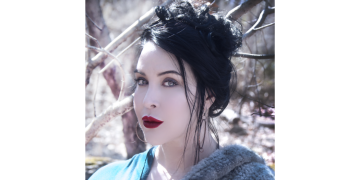La Scala’s audience can now be anywhere.
The opera house in Milan is sharing select performances online through LaScalaTv, a platform that started streaming in February. Its first live offering was a broadcast of Verdi’s opera “I Vespri siciliani,” conducted by Fabio Luisi and featuring such soloists as Marina Rebeka and Luca Micheletti.
The program also includes concerts and ballets. On May 11, Alberto Malazzi conducts “Petite Messe Solennelle” by Rossini, to commemorate the anniversary of La Scala’s restoration and reopening after World War II. The ballet “Romeo and Juliet” by Sergei Prokofiev takes the screen to choreography by Kenneth MacMillan on June 28.
The on-demand library also includes performances for children, starting with a staged concert based on carnival celebrations called “Lalla & Skali and … the Enchanted Mask.”
The platform is part of a wider effort to modernize La Scala’s infrastructure, including an extensive educational outreach program using the technology and plans for subtitles on seat backs.
Dominique Meyer, the theater’s current artistic director and chief executive, said that technological advances in recent years had made it easier for an opera house to widen its reach.
“It is a real leap,” he said, recalling the difficulties he faced in 2013 when starting a platform for the Vienna State Opera during his tenure there. “Most people have a faster internet connection, which is extremely important when viewers want to watch a stream in 4K.”
The equipment available for in-house operations has also advanced rapidly. Small, robotic cameras can capture performances in the dark without necessitating changes of light, leaving on-site viewers undisturbed. And microphones can easily transmit quality sound.
Performances on LaScalaTv are available in either ultra high definition or high definition. The most expensive offering, a live program at the highest resolution, costs 11.90 euros (about $13), while a children’s program at the lower resolution costs €2.90. The audio track is uniformly transmitted in AAC, a compression format of a higher grade than MP3.
Mr. Meyer has prioritized a wide view of the stage. “It was important to me to respect a certain distance,” he said. “One doesn’t need close-ups that show the sweat on the face of Gilda at the end of ‘Rigoletto.’”
He also wants to capture dance performances at a healthy distance. “If you come too close, it looks like the dancer’s head is about to hit the top of the screen,” he said. “A principle of the whole project was that there would not be too many cuts, and that the viewer would have the liberty to focus where he or she pleases.”
Intermissions provide glimpses backstage and facts about La Scala’s history. Recent offerings have included a tour of the theater’s museum, home to such treasures as a manuscript page from Verdi’s “Nabucco” and a portrait of the soprano Maria Callas.
Mr. Meyer said that the house had just scratched the surface of the possibilities and that “there was a lot to tell,” citing “the rehearsals, what happens behind the scenes, the [costume and set] workshops.”
Of central importance is bringing some of these stories to younger viewers. The theater has started by creating a network of 200 schools in Italy to bring students into contact with opera.
For example, a live rehearsal of Puccini’s “La Bohème” was recently followed by a livestream of the performance itself. A documentary about Bellini’s “I Capuleti e i Montecchi” was combined with an on-demand viewing of the opera itself. This September will bring the first ballet program, revolving around Tchaikovsky’s “Swan Lake.”
The house is also teaming up with RAI, Italy’s state broadcaster, to share footage from the 1970s and ’80s, including performances under the conductors Claudio Abbado and Riccardo Muti. The main sponsor of LaScalaTv is the bank Intesa Sanpaolo, and the Cariplo Foundation is supporting the dissemination of content to schools.
“We brought in about €40.5 million in sponsorship revenue last season,” Mr. Meyer said. “That is huge in Europe. All these projects are being financed.”
In the theater, subtitles will be installed this summer on the backs of chairs with translations in Italian, English, French, German and Spanish, using the same software as the streaming platform (eventually there will be eight languages). On May 29, La Scala unveils its new website — which includes a digital magazine — coinciding with its presentation of the 2023-24 season.
Italian viewers thus far make up half the streaming service’s audience. Another fourth comes from other European countries. Outside Europe, the highest numbers are currently in the United States and Russia.
In-house, Mr. Meyer said, La Scala has regularly sold out this season. “We of course can’t create more seats,” he said. “This technology allows us to expand our audience, also to children.”























